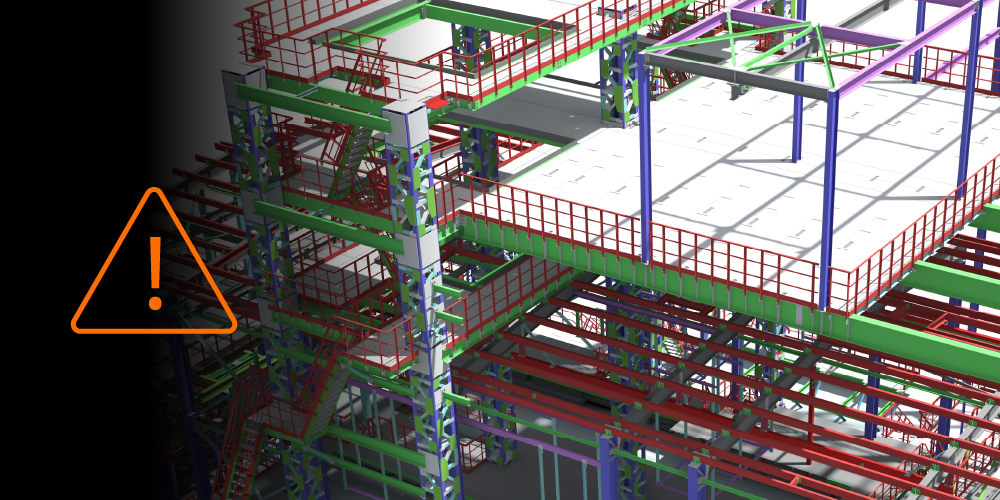Related Articles
— 10 min read
How to Avoid Delays, Disputes, and Penalties with Occupancy Permits
Last Updated Oct 30, 2025
Samantha Nemeny
30 articles
Sam—Samantha if she’s feeling particularly academic—has spent a decade in content marketing, with eight years focused on Australia’s construction industry. She has a knack for making complex ideas easy to understand, turning industry jargon into clear, engaging stories. With a background in SEO and marketing, she’s spent the past three years at Procore, helping industry professionals navigate the world of construction with content that’s both insightful and easy to digest.
Last Updated Oct 30, 2025

For some construction teams, occupancy permits feel like the last box to tick. For others, they’re the moment when months—or years—of work are tested against the codes, drawings, and promises that built the project.
In truth, occupancy permits are both a finish line and a stress test. They determine whether every inspection, system, and safety measure meets the standard for occupation. And when something falls short, handover stalls, payments pause, and client confidence wavers.
This article explains:
- How occupancy permits work
- Common pitfalls that hinder their completion,
- How requirements differ across Australian states and territories
- The steps contractors can take to clear this final hurdle smoothly, which are key because occupancy permits are best viewed as a green light for securing approval instead of mere paperwork.
With that foundation in place, let’s explore what an occupancy permit is and why it matters.
Table of contents
What is an Occupancy Permit?
In Australia, an occupancy permit is a legal document issued by the building surveyor or certifier once final inspection wraps. It confirms that a building is safe, compliant with building codes and approved plans, and ready for use.
While required for all new builds, occupancy permits also apply to major refurbishments and projects involving a change of building use. And since this document authorises lawful occupation, it’s also mandatory before leasing, settlement, or commencing commercial operations.
Securing the permit on time is a critical handover milestone affecting several aspects of project success, including:
- Revenue Recognition: Once contractors can hand over the building, owners can move tenants in, and final payments begin.
- Legal compliance: Permits help avoid fines, liability exposures, and potential invalidation of insurance.
- Brand and business authority: Smoothly securing a permit at completion signals professionalism and builds confidence with clients, surveyors, and regulators.
- Risk management: Issued permits signal that safety systems (fire, accessibility, structural integrity) are signed off before handover, protecting contractors from downstream liability.
Why Occupancy Permits Are Required
Occupancy permits are mandated under the National Construction Code and state building legislation, such as the Building Act 1993 in Victoria. Certain classes of buildings—Class 1b and Classes 2 through 9—cannot be lawfully occupied without approval.
Attempting to occupy without a permit carries severe consequences, including:
- Legal penalties: In July 2023, a public entertainment venue in Victoria was fined a total of AU$16,655.73 for converting an old factory or warehouse into a function centre or event space without a building permit signing off on the fit out and modified use.
- Financial losses: The Australian Building Codes Board estimates that defects and compliance failures cost commercial buildings about AU$1.8 billion annually through delays, remediation, and legal expenses.
In most jurisdictions, a valid occupancy permit is also needed to sell a property, finalise insurance, and connect utilities. It serves as proof that inspections are complete and compliance risks are resolved before occupation.
Keep in mind that permits don’t inoculate you from the serious responsibility of overall compliance, and these failures can still undermine delivery. A 2025 Victorian review of more than 800 buildings revealed widespread breaches in cladding standards, with permits issued despite incomplete documentation. These gaps forced costly remediation and delayed handovers.
State-by-State Variations
Each state and territory applies its own rules for occupancy permits. Builders must understand these local requirements to avoid delays, penalties, and invalid certifications.
Victoria
Victoria requires occupancy permits for all new homes, units, apartments, and commercial buildings. The Relevant Building Surveyor issues them under the Building Act 1993. If an occupancy permit is not required, such as for minor works, a Certificate of Final Inspection is issued in its place.
New South Wales
New South Wales uses the term Occupation Certificate. A private or council certifier issues it as the final step in the development approval process. The certificate confirms the building complies with development consent and is safe to occupy. Interim Occupation Certificates can allow partial occupancy of a stage of construction.
Queensland
Queensland now uses a Certificate of Occupancy for Classes 1b to 9, replacing the previous Certificate of Classification. Detached houses, classified as Class 1a, typically receive a final inspection certificate, while multi-unit and commercial projects require a certificate of occupancy.
Western Australia
Western Australia requires occupancy permits for Class 2 to 9 buildings, including multi-residential, commercial, and public buildings. They are not typically required for Class 1 single dwellings. Western Australia also allows temporary occupancy permits, issued using Form BA9, for partial occupation or a change of use.
Northern Territory
The Northern Territory uses a three-tier system of occupancy certification. An Occupancy Permit is issued when all permit conditions and codes are fully complied with. A Certificate of Substantial Compliance may be granted if there are minor deviations or missing paperwork.
For unapproved work completed before 2016, a Certificate of Existence can be applied. For new projects, the goal is always a full occupancy permit.South Australia
South Australia requires a Certificate of Occupancy for all new habitable and occupied buildings. Until recently, Class 1a houses and non-habitable structures such as sheds, carports, and verandahs were exempt.
Since 1 October 2024, Class 1a houses must also obtain a certificate before occupation, meaning most new homes now require one.Tasmania
The Northern Territory uses a three-tier system of occupancy certification. An Occupancy Permit is issued when all permit conditions and codes are fully complied with. A Certificate of Substantial Compliance may be granted if there are minor deviations or missing paperwork.
For unapproved work completed before 2016, a Certificate of Existence can be applied. For new projects, the goal is always a full occupancy permit.
How to Obtain an Occupancy Permit
Incomplete project documentation, failed inspections, or unresolved defects can halt approvals and delay settlement. Each step must be completed in order and fully documented to avoid rejection.
Notify the Certifier for Final Inspection
The builder or project manager contacts the registered building surveyor once work is substantially complete. All mandatory stage inspections, including footings, frame, waterproofing, and other regulated checks, must already be approved. Internal pre-inspections should be conducted early to avoid costly failures.
Prepare the Required Documentation
The application must include complete compliance records. These typically cover:
- Builder’s certification: Builder’s declaration or final inspection certificate confirming compliance with the building permit
- Trade certificates: For plumbing, electrical, waterproofing, glazing, HVAC, and termite treatment
- Fire safety certificates: Verifying alarms, sprinklers, smoke control, emergency exits, and lighting
- Drawings: As-built drawings showing final conditions if changes occurred during construction
- Specialist certifications: Energy efficiency reports and other specialist certifications requested by the surveyor
Submit the Application
The builder or owner lodges the application with the building surveyor or permit authority. The submission must include all compliance documentation and payment of relevant fees.
Undergo Assessment and Verification
The building surveyor reviews the application and inspects the completed works. They confirm compliance with approved plans, the National Construction Code, and all safety and performance requirements.
Final inspections often include testing of fire systems, lifts, and mechanical services to confirm operational safety.
Receive Issuance or Refusal
If compliant, the permit is issued, confirming the approved use, NCC classification, maximum occupancy load, and any ongoing safety obligations.
If only minor non-safety defects remain, a Temporary Certificate of Occupancy may be granted. If major breaches are identified, the permit is denied until rework is completed and verified.
Take the example of Oakdale South Estate’s Lot 2A warehouse and office complex in New South Wales: the issuing of OC-22093 (27 July 2022) allowed occupation of part of the site while clearly excluding external ancillary works and specifying that a full Occupation Certificate must be obtained within five years of the first partial occupation.
It’s a practical reminder that when safety systems and structural compliance are proven, certifiers can grant temporary or staged occupancy. This keeps projects moving, tenants operating, and revenue flowing without compromising safety or compliance.
Pro Tip
reat your certifier like a project partner, not an end-of-job hurdle. Early coordination on inspection sequencing and documentation standards prevents most last-minute approval delays.
How Construction Leaders Can Stay Ahead on Occupancy Permits
Occupancy permits are a board-level risk issue. Mishandling them exposes projects to margin loss, litigation, and reputational damage.
The Building Confidence Report, prepared for the Australian Building Codes Board, estimates that implementing its reform package could cut defect costs in commercial buildings by about 60%. Senior leaders must treat compliance as a strategic priority and enforce discipline from concept to handover.
Integrate Compliance Requirements from Day One
Engage an accredited building surveyor at design to align plans with the NCC and set clear approval pathways. Early collaboration with contractors helps identify buildability or material risks before they impact final approvals.
Inspection milestones should also be locked into the project program.
Fire systems, structural elements, and egress routes are common points of failure. Scheduling these inspections early prevents last-minute rework that delays approvals.
Mandate Quality and Safety from Start to Closeout
Quality assurance processes must run continuously, not just at the end of the construction phase. Internal inspections at key stages reduce the risk of late-stage surprises. Subcontractors with strong compliance track records should be prioritised to avoid rework during final inspections.
Strong safety leadership keeps compliance continuous rather than reactive.
Digital tools can predict hazards, streamline WHS compliance, and provide early warnings before they escalate. Conducting internal pre-inspections ahead of the certifier’s visit helps close out defects early and avoid failed approvals.
Leverage Technology for Documentation and Communication
Integrated digital engineering platforms consolidate design, safety, and approval documentation. Photogrammetry and LiDAR, integrated with Building Information Modelling (BIM), provide accurate data on fire systems, egress, and other safety measures, thereby reducing disputes over site conditions.
Keep certificates and approvals in a single, version-tracked system so surveyors can verify current records. Closeout documentation, including O&M manuals and as-builts, should be compiled progressively rather than left until the end.
Pro Tip
Use digital platforms that link design, inspection, and approval records in one ecosystem. Real-time access for surveyors can shave weeks off occupancy certification.
On the Pacific Highway Woolgoolga to Ballina upgrade, digital engineering played a central role in reducing errors, enhancing collaboration, and accelerating delivery. The project demonstrates how technology can reduce compliance risk while enhancing regulator confidence.
Strengthen Technical Assurance
Complex systems demand independent verification.
When performance solutions are used, builders should secure written sign-off from accredited engineers and surveyors. For fire engineering, facades, or other high-risk elements, independent peer reviews add confidence that designs are both safe and compliant.
Leaders should also formalise this process by documenting review points and outcomes. Verified records not only reduce disputes but also demonstrate diligence to regulators, accelerating approvals and protecting project handover.
Manage Approvals Proactively With Certifiers
Many contractors understand that maintaining ongoing engagement with the certifier to surface issues early can be one of the main challenges of construction.
One way to get ahead of the process is by scheduling progress inspections and pre-final reviews to ensure gaps are identified early. This reduces the chance of a failed approval that can freeze retention payments and delay settlement. These check-ins also build confidence with regulators by demonstrating that quality and compliance are being consistently tracked, rather than left to chance.
Where the program allows, staged or temporary approvals can also help maintain momentum. They give owners the ability to occupy parts of a building while minor non-safety works are finalised, keeping revenue flowing and tenants moving in.
These approvals, however, must be treated as contingency tools.
Expiry dates need to be closely tracked, and conditions must be met in full to avoid legal or financial exposure. Leaders who use interim approvals strategically, while maintaining a focus on full certification, safeguard both cash flow and reputation.
Occupancy permits are a measure of project control and delivery discipline
Occupancy permits capture the full picture of a project’s quality, coordination, and discipline. Teams that plan early, document carefully, and work closely with certifiers deliver projects that meet every requirement and stand up to long-term performance
Categories:
Written by
Samantha Nemeny
30 articles
Sam—Samantha if she’s feeling particularly academic—has spent a decade in content marketing, with eight years focused on Australia’s construction industry. She has a knack for making complex ideas easy to understand, turning industry jargon into clear, engaging stories. With a background in SEO and marketing, she’s spent the past three years at Procore, helping industry professionals navigate the world of construction with content that’s both insightful and easy to digest.
View profileExplore more helpful resources

Managing Direct Costs in Construction: How Visibility Drives Profitability
Direct costs define the financial reality of every construction project. They cover the labour, materials, and equipment that drive delivery and determine profitability. But even the best-planned budgets can shift...

BIM Clash Detection: Reducing Rework, Delays, and Risk in Construction
Design clashes can be a significant hidden cost in construction, as each conflict between systems risks expensive rework, project delays, and reduced margins. BIM clash detection empowers teams to identify...

Next-Gen Job-Costing: Ready to Move? 5 Things to Consider Before You Get Started
In this three-part series, Quantity Surveyor turned Financial Solutions Specialist Clint Burgess uncovers the real-world gains for people, processes, and profits when businesses move from legacy to next-generation Enterprise Resource...

From Workarounds to Workflow: Solving Construction’s Legacy Job-Costing System Challenges with Next-Gen Tools
In this three-part series, Quantity Surveyor turned Financial Solutions Specialist Clint Burgess uncovers the real-world gains for people, processes, and profits when businesses move from legacy to next-generation Enterprise Resource...
